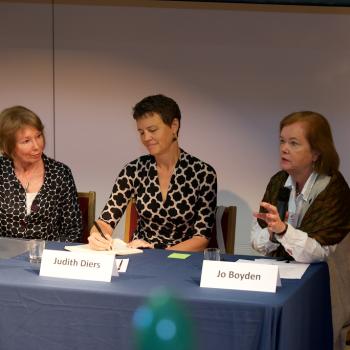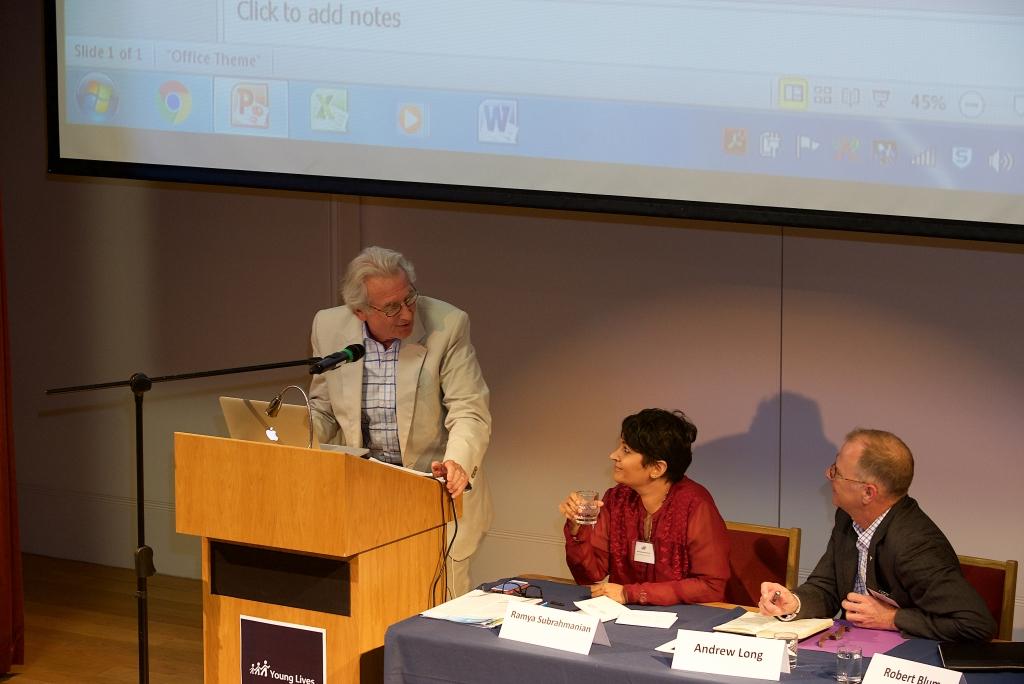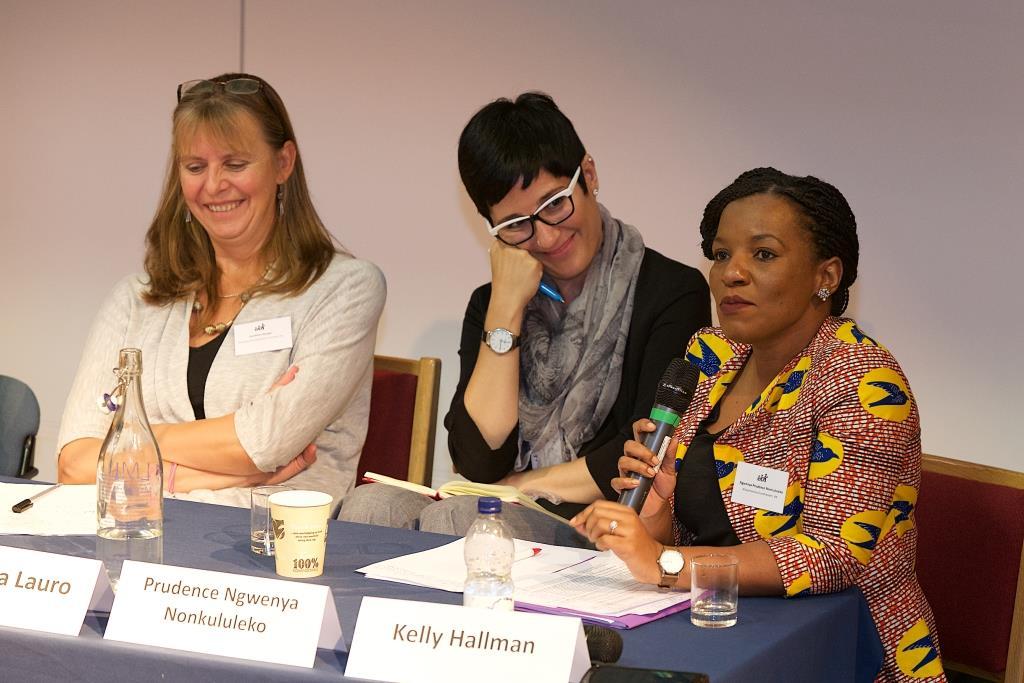
It’s been a month since the conference on Adolescence, Youth and Gender: Building Knowledge for Change and I’ve been impressed by the continued engagement on the topic by presenters, participants and virtual contributors—these exchanges providing a fantastic opportunity to reflect on the wider implications for research, policy and practice focused on the young.
Many believe that the hopes of the new Global Goals rest on the current generation of young people. It is encouraging that younger generations are getting such positive attention, as this narrative counteracts the deep suspicion and unhelpful stereotyping of adolescents and youth that has pervaded debates and interventions for many decades.
But we still have a long way to go when it comes to understanding how best to support the young through the challenging pathways to adulthood in this complex and dynamic world. We know so much more about early childhood than we do adolescence and youth. And even when we do know things we don’t always take them into account. We know that the poorest and most socially disadvantaged young people have very little access to quality public services. Yet governments persist in creating centralised bureaucracies that have very limited capacity to serve young people in the most deprived communities effectively. We know that the young are often excluded—for example from sexual and reproductive he
Similarly, we know that many young people are confident engaging with and learning from others through digital technologies, sometimes more so than they are in institutions like schools that are created and run by adults. Yet we cling to the systems and structures that are familiar from our own childhoods while neglecting the social mobilisation, capacity-building and awareness-raising opportunities of the digital world—focusing instead on the risks this world presents.
During the Young Lives conference we heard many accounts of what shapes young people’s lives; from the ways in which poverty and social convention constrain girls’ options and resources, to their extraordinary resilience and strategies of resistance; from the place of the law in social change, to the contribution of community advocacy efforts. There was a clear recognition of the advances that have been made in gender equality over recent decades and a celebration of the remarkable contribution to this process made by feminist and human rights activists across the globe. The increasingly active and effective role of young people in these arenas was also highlighted. A shared commitment to re-framing adolescence and youth in a more constructive light, as a time of both responsibility and opportunity, was apparent from the outset.
However, at the same time, concerns were expressed about how in development efforts girls and young women are increasingly instrumentalised as a vehicle for economic growth. In this sense, laying the hopes of the Global Goals at the feet of adolescents and youth, and particularly female adolescents and youth, may detract from their inherent right to social justice.
Then again, the emphasis conference participants gave to the many ways in which girls and young women are disadvantaged as compared to boys and young men left me wondering whether we may be underestimating the obstacles faced by males. Take, for example, their often fruitless efforts to continue their education in the face of family expectations that they work to boost household income. In fact the gender story emerging from Young Lives is quite a complicated one and we find that in some places and some respects boys are worse off than girls. This suggests that it is really important to avoid jumping to conclusions about gender.

One of the most animated, and possibly the most controversial, debates was about biological influences. Some see these as a central driver of adolescent attitudes and behaviour, whereas others say there is nothing particularly distinctive about this life-phase, considering adolescence to be a recent social invention of rich industrialised nations. What I took from this exchange is that biology clearly does matter, but that its expression in young people is profoundly influenced by political, economic and social forces operating in families, communities and society, together with individual inclination. This highlights the importance of a multidisciplinary perspective on the life-course, which takes full account of both individual (biological and social) and contextual forces.
This isn’t just about the kind of research evidence we bring to bear, but our understanding of how change happens, what form of change is needed and how we design change initiatives. For example, poverty can so severely limit choice that marrying girls off young may have as much to do with providing them with long-term material security as it does with conserving ideals of femininity. Consequently, interventions that centre solely on shifting patriarchal norms and values may undermine family and community livelihood strategies or relationships, leading unintentionally to adverse outcomes for those they intend to assist. Efforts to secure equality and justice for girls need to address local power structures and economic conditions because these have a big impact on the choices for girls’ futures.
With this in mind, quite a few conference participants made a strong case for addressing gendered norms, structures and process broadly, rather than focusing exclusively on specific practices, like child and early marriage or parenthood. Similarly, there was a plea to involve boys and men in all efforts to bring about gender equality. More provocatively, some questioned whose norms should apply in interventions, or who sets the objectives for change, given the complex trade-offs involved in protecting and enabling the young.

One of the unexpected features of the conference was that the debates focused more on adolescence than on youth or young adulthood. This may reflect a wider trend in research and policy, since recent research evidence points to adolescence as the second critical window for intervention after early childhood. A focus on youth might have implied greater attention to the gendering of labour markets, care responsibilities, family formation and parenthood, all of which are key transitions in the passage to adulthood.
In 2016 Young Lives is in the field for its fifth survey round and the two cohorts in our sample are aged 15 and 22 years, so we will soon be bringing new data on these topics to the table. This is one good reason why we plan to continue the dialogue and exchange across disciplines, continents and fields of work that was initiated at the conference!
Our conference briefing note examines the key themes and research challenges arising from the conference.

It’s been a month since the conference on Adolescence, Youth and Gender: Building Knowledge for Change and I’ve been impressed by the continued engagement on the topic by presenters, participants and virtual contributors—these exchanges providing a fantastic opportunity to reflect on the wider implications for research, policy and practice focused on the young.
Many believe that the hopes of the new Global Goals rest on the current generation of young people. It is encouraging that younger generations are getting such positive attention, as this narrative counteracts the deep suspicion and unhelpful stereotyping of adolescents and youth that has pervaded debates and interventions for many decades.
But we still have a long way to go when it comes to understanding how best to support the young through the challenging pathways to adulthood in this complex and dynamic world. We know so much more about early childhood than we do adolescence and youth. And even when we do know things we don’t always take them into account. We know that the poorest and most socially disadvantaged young people have very little access to quality public services. Yet governments persist in creating centralised bureaucracies that have very limited capacity to serve young people in the most deprived communities effectively. We know that the young are often excluded—for example from sexual and reproductive he
Similarly, we know that many young people are confident engaging with and learning from others through digital technologies, sometimes more so than they are in institutions like schools that are created and run by adults. Yet we cling to the systems and structures that are familiar from our own childhoods while neglecting the social mobilisation, capacity-building and awareness-raising opportunities of the digital world—focusing instead on the risks this world presents.
During the Young Lives conference we heard many accounts of what shapes young people’s lives; from the ways in which poverty and social convention constrain girls’ options and resources, to their extraordinary resilience and strategies of resistance; from the place of the law in social change, to the contribution of community advocacy efforts. There was a clear recognition of the advances that have been made in gender equality over recent decades and a celebration of the remarkable contribution to this process made by feminist and human rights activists across the globe. The increasingly active and effective role of young people in these arenas was also highlighted. A shared commitment to re-framing adolescence and youth in a more constructive light, as a time of both responsibility and opportunity, was apparent from the outset.
However, at the same time, concerns were expressed about how in development efforts girls and young women are increasingly instrumentalised as a vehicle for economic growth. In this sense, laying the hopes of the Global Goals at the feet of adolescents and youth, and particularly female adolescents and youth, may detract from their inherent right to social justice.
Then again, the emphasis conference participants gave to the many ways in which girls and young women are disadvantaged as compared to boys and young men left me wondering whether we may be underestimating the obstacles faced by males. Take, for example, their often fruitless efforts to continue their education in the face of family expectations that they work to boost household income. In fact the gender story emerging from Young Lives is quite a complicated one and we find that in some places and some respects boys are worse off than girls. This suggests that it is really important to avoid jumping to conclusions about gender.

One of the most animated, and possibly the most controversial, debates was about biological influences. Some see these as a central driver of adolescent attitudes and behaviour, whereas others say there is nothing particularly distinctive about this life-phase, considering adolescence to be a recent social invention of rich industrialised nations. What I took from this exchange is that biology clearly does matter, but that its expression in young people is profoundly influenced by political, economic and social forces operating in families, communities and society, together with individual inclination. This highlights the importance of a multidisciplinary perspective on the life-course, which takes full account of both individual (biological and social) and contextual forces.
This isn’t just about the kind of research evidence we bring to bear, but our understanding of how change happens, what form of change is needed and how we design change initiatives. For example, poverty can so severely limit choice that marrying girls off young may have as much to do with providing them with long-term material security as it does with conserving ideals of femininity. Consequently, interventions that centre solely on shifting patriarchal norms and values may undermine family and community livelihood strategies or relationships, leading unintentionally to adverse outcomes for those they intend to assist. Efforts to secure equality and justice for girls need to address local power structures and economic conditions because these have a big impact on the choices for girls’ futures.
With this in mind, quite a few conference participants made a strong case for addressing gendered norms, structures and process broadly, rather than focusing exclusively on specific practices, like child and early marriage or parenthood. Similarly, there was a plea to involve boys and men in all efforts to bring about gender equality. More provocatively, some questioned whose norms should apply in interventions, or who sets the objectives for change, given the complex trade-offs involved in protecting and enabling the young.

One of the unexpected features of the conference was that the debates focused more on adolescence than on youth or young adulthood. This may reflect a wider trend in research and policy, since recent research evidence points to adolescence as the second critical window for intervention after early childhood. A focus on youth might have implied greater attention to the gendering of labour markets, care responsibilities, family formation and parenthood, all of which are key transitions in the passage to adulthood.
In 2016 Young Lives is in the field for its fifth survey round and the two cohorts in our sample are aged 15 and 22 years, so we will soon be bringing new data on these topics to the table. This is one good reason why we plan to continue the dialogue and exchange across disciplines, continents and fields of work that was initiated at the conference!
Our conference briefing note examines the key themes and research challenges arising from the conference.

